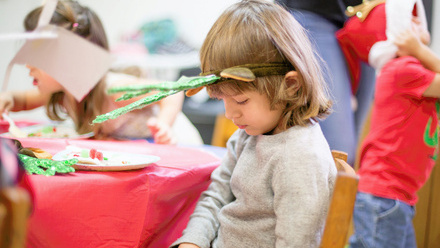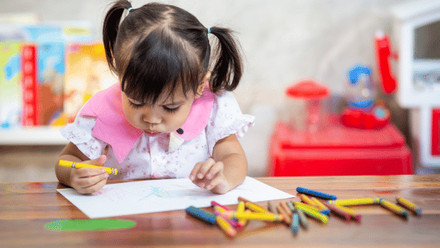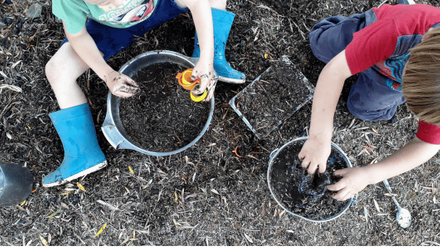Using universal provisions to promote inclusive education
Every child has the right to an education and, as early education and care professionals, it’s part of our duty to ensure that every child has equal access to high-quality learning opportunities and nurturing care.
Children with special educational needs often require additional support when it comes to aspects of the learning environment, including the impact of any sensory impairment, difficulties with physical access or cognitive ability. Whilst some children will need specialised and individual support provisions put in place to help with their specific needs, there are lots of things we can do within settings to make the environment as inclusive as possible for everyone.
In this article, we’re going to look at universal provision and what it means for supporting all children within early education and care.
What do we mean by universal provision?
Universal provision is there for everyone. It is provision put in place to benefit every learner by reducing barriers to opportunities and helping to equalise access for all. It is there for everyone to get involved with and will support all children in their learning, but it specifically aims to reduce barriers for children with additional needs.
Examples might include:
- using Makaton with all children
- implementing visual aids into communication, such as on trays and the timetable of the day
- having sensory toys available for use during focused listening times and calming boxes available at all times to support self-regulation skills
- giving short and clear instructions followed by adequate thinking time
- accessible playground space that can be used by everyone, regardless of physical ability.
It is everyone’s responsibility to include all children, regardless of their development or ability, in an enriching environment that extends their learning and gives them meaningful chances to grow.
Universal provision helps us achieve this for most children as it creates an inclusive and welcoming environment that considers the needs of all children. Whilst some children with special educational needs will benefit from more targeted provisions (such as 1-1 support, personal care routines and health care plans), universal provision work towards creating a learning environment that respects everyone’s differences and thinking about everyone’s needs within the setting.
The key aim when thinking about universal provision is to make the environment as a whole the most inclusive that it can be. This means breaking down as many potential barriers to learning as we can before knowing about the children’s specific circumstances and reacting to it when a situation arises. By creating an environment that is universally welcoming and carefully considered for families with a variety of needs, we create consistency within the setting that allows children to build a stronger sense of belonging and professionals to strengthen partnerships with families.
Let’s have a look at some of the ways to implement quick changes that boost your setting’s universal provision.
1. Makaton
Makaton is a “unique language programme that uses symbols, signs and speech to enable people to communicate". Though liked to British Sign Language (BSL), it is used without the linguistic style of BSL and instead highlights keywords to enhance language acquisition and give children alternative means to communicate beyond their verbal ability. This is an incredibly powerful tool for children who are not able to communicate verbally and introduces a new way to express oneself.
Children who do not have additional needs with their communication and language development still benefit massively from using Makaton because they are able to develop their own vocabulary in new ways, as well as learn a diverse and inclusive avenue for communicating with their friends who might rely on Makaton more so.
2. Accessible play areas
Inclusive education also refers to meetings physical needs. It’s important to make all areas of provision accessible to everyone to ensure freedom of choice and equality of opportunity. This might be something more visible, such as making sure doorways are wheelchair accessible or having contrasting colours at the end of ramps and stairs to make it safer for visually impaired people to use independently.
However, some barriers might be less obvious: children who struggle with sensory input could be deterred from interactions due to how it feels to their senses. Think about how ‘busy’ the setting is at different points of the day. What does it smell like? How many different sounds can you hear? For children with sensory processing differences, senses are often magnified and sensory overload can make it difficult to feel safe and happy. Think about how this exposure can be reduced to create an inclusive environment that is comfortable for everyone.
3. Self-regulation strategies
Self-regulation involves supporting children to recognise their own feelings, adapt to them accordingly and empathise with others. All children express their emotions in different ways, but it can be more challenging for some to articulate their feelings and take the steps to reduce overwhelm and distress.
Children with special educational needs might also need additional supporting in recognising their feelings and communicate them to others, which is why universal provision to support everyone is so key to integrating positive practice into settings. With all children, communication is vital when thinking about self-regulation but is particularly so when it comes to supporting children with additional needs.
Creating safe spaces for children to take control of their needs and take themselves to quieter, smaller and calmer spaces when needed allow an open communication and regulate by themselves, asking for support when they can identify it. It can be difficult to provide secluded spaces in an early education and care setting but resources like calming boxes and sensory zones prevent overwhelm by giving children an unrestricted access to ways to regulate by themselves.
Key takeaways
Universal provisions are barrier-breakers for all and have incredible benefits for all children, although children with special educational needs might feel the advantages of these provision changes more than others. Universal provision that considers all children’s ability and needs are not only helpful for improving access to learning but also developing a strong sense of empathy, inclusion and diverse understanding for all children to feel welcome, safe and valued.
Have a look at some of our inclusive education resources to think about other ways to make your practice more inclusive for all.
Reflection
Read the following scenario and answer the questions below:
In the toddler room, you have a child called Chelsea, a three-year-old girl with some signs of sensory processing disorder. Chelsea loves to play in the garden in nursery and, at home, her parents have said she likes to help water the plants and play in the water. You try to extend these interests at nursery by developing a sea-themed water activity in the free-flow, which Chelsea instantly takes interest in. But when she sees the aprons and stools, she diverts her attention to the outdoor blocks.
Questions:
- Chelsea initially looked delighted to see the provision set up – what might have caused her to move away?
- Think about some of the things you use within this activity that could act as a barrier to all children accessing an enjoyable experience they want to participate in. Can you identify five?






